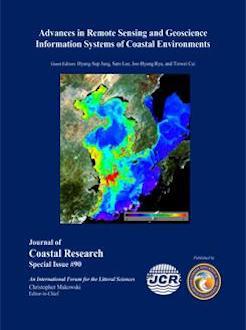Liang, X.-J.; Qin, P.; Xiao, Y.-F.; Kim, K.-Y.; Liu, R.-J.; Chen, X.-Y., and Wang, Q,-B., 2019. Automatic remote sensing detection of floating macroalgae in the yellow and east china seas using extreme learning machine. In: Jung, H.-S.; Lee, S.; Ryu, J.-H., and Cui, T. (eds.), Advances in Remote Sensing and Geoscience Information Systems of Coastal Environments. Journal of Coastal Research, Special Issue No. 90, pp.272-281. Coconut Creek (Florida), ISSN 0749-0208.
In the past 10 years, floating macroalgae blooms have occurred repeatedly in the Yellow Sea. For the purpose of disaster prevention and mitigation, it is very important to monitor floating macroalgae blooms using satellite imagery. The traditional macroalgae remote sensing detection methods based on the vegetation indices are very sensitive to the threshold value which is affected by many factors in the complex atmospheric–oceanic environment. The threshold has obvious temporal and spatial variations, and is difficult to determine accurately. The expert experience is required to assist the value of threshold which leads to the low automation of detection. Aiming at this problem, this study introduces an Extreme Learning Machine (ELM) into the field of macroalgae remote sensing detection. Taking the four-bands GF-1 WFV optical images with 16-m resolution as an example, an automatic remote sensing detection model of macroalgae is constructed. The evaluation based on independent data shows that the accuarcy of this method is up to 86 %. The method is not disturbed by thin clouds, sun glint, high-turbidity water, and other factors. In addition, no manual intervention is required which suggests that the proposed method has strong potential of automated detection for the floating macroalgae blooms.





